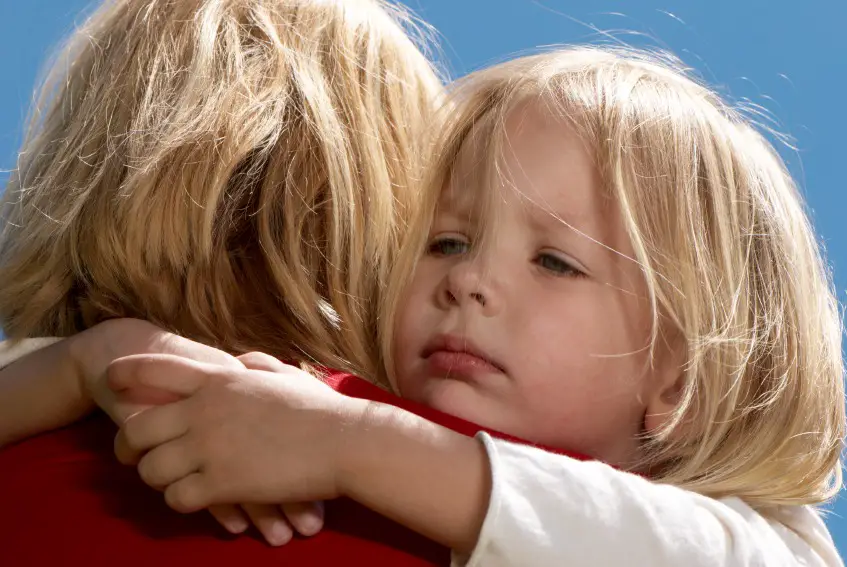It’s pretty easy to tell if your little one experiences toddler separation anxiety.
Sobbing, throwing tantrums, screaming, and/or grabbing for you whenever you leave are signs that anxiety is probably the root of the problem.
Is it Normal for a Toddler to Experience Separation Anxiety?
Separation anxiety can come quite naturally for young children.
Becoming upset when mom or dad leaves can be very normal during the toddler years (even if mom or dad are only gone for a short trip to the other room).
It is also something that most children will naturally outgrow.
What Can I Do to Help my Toddler with Separation Anxiety?
Prepare Your Toddler: Speak with him/her ahead of time.
Let your little one know in simple language when you two will be separated, who will care for your tot, what your little one will do while you’re gone, and when you will be back.
Ex: “After dinner Mommy and Daddy need to go bye-bye. Karen will come over to play with you.
You and Karen can build with blocks and play with play-doh. Mommy and Daddy will be back in time to put you to bed.”
Follow a Goodbye Routine: There’s familiarity in routines. When leaving your toddler, follow a simple routine to help keep things as predictable as possible.
Give Your Child a Comfort Object: Make sure your toddler has a special comfort object to help him/her feel more secure like a special bear, photograph or blankie.
This is especially helpful if your toddler will be watched somewhere away from home like at a sitter’s home.
Acknowledge Your Tot’s Feelings: Separation anxiety in toddlers is all about feeling sad and scared and worried that mom or dad may not come back.
Talk about these feelings. Sometimes children are helped simply by knowing what it is they are feeling and being able to express those feelings to mom and dad.
Choose a Caregiver Your Child Knows: Having a familiar face to turn to when mom or dad leaves can help your child adjust better during a time of separation.
Don’t Leave Right Away: Give your tot a chance to get used to the caregiver before leaving.
Start Small: Start with leaving your toddler for short trips. Eventually you can work up to longer times of separation.
Look Positive: It’s easy to worry when your tot is so distraught. Make sure that your worry doesn’t show up on your face or in your body language.
It may be harder for your little one to calm down if s/he notices that you are also worried and upset!
Say Goodbyes, Don’t Sneak Out: It’s tempting when dealing with separation anxiety in toddlers to want to sneak out to avoid seeing your little one’s meltdown.
In the long run this will not help his/her separation anxiety. It’s better to tell your child goodbye and give a hug, letting your tot know you’re leaving.
Let the Caregiver Know What Activities Your Toddler Loves: It will help your tot transition better if the caregiver can start an activity that your tot enjoys.
Give Toddler a Cue For When You’ll Be Back: Help your toddler know when you plan on being back by explaining it in terms of your toddler’s schedule, rather than yours.
Don’t say “I’ll be back when I’m done with work”. Find out what activity your toddler does around the time you will return and use that as your cue.
Return When You Say You Will: When you have an anxious toddler it’s important to return when you are expected to return.
Your tot may begin to feel more secure when you leave as s/he begins to realize that you do come back on time.
Image: todaysparent.com

